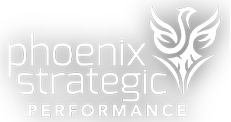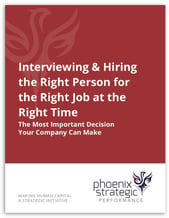Job descriptions are the unsung hero driving the Performance Management process. If the performance management process is fundamental to your Human Asset Management Strategy (HAMS), job descriptions are the mighty little, obscure engine driving the whole process.
How important are job descriptions in HAMS, and how can those often-forgotten job descriptions be so important? Because if they are only used as HR tools for job banding and compensation, then they are misnamed. If that's the case, they should be called job categories. Here's what job descriptions should be doing for your organization.
You must first determine the function in your organization responsible for utilizing job descriptions. What is the job description's real, dynamic driving force behind them? To analyze this, we start with where job descriptions are parked. Job descriptions can live in HR, but that should only be their part-time home. Job descriptions should be relevant to every functional group in every organization and be used by the functional group full-time! Job descriptions are the foundation to determine what a job does, how an organization works, how it grows, if it can grow/compete and if it will stagnate. Most importantly, job descriptions must not only live in the operating functions, job descriptions need to be relevant and referenced continuously. As a consultant, I have frequently heard these answers to the question, "Can I see your job descriptions?":
- We don't have any.
- We have them but haven't reviewed them in 5, 10, or X years.
- We have some, but we don't have all of them.
- We have them, but they don't reflect what people do.
- We have them, but they don't reflect what people do, and we only use them for job banding or determining raises.
- We only look at them when someone threatens to quit.
- We only look at them when we need to take disciplinary action.
- HR makes us do them, but they aren't worth the paper they're printed on – I don't know why we have them or why we use them.
As you can see, there is a full range of responses about the poor job description's misuse, abuse, and neglect. Sadly, job descriptions have become another stale and sterile process, not adding much to the organization. Inside every functional part of the organization, here's what real, dynamic, robust multi-dimensional job descriptions should look like.
1. General description of the job with a functional title that truly captures the main functions of the role and what the role should accomplish
The title Associate, Generalist, or Accountant 1 says nothing about the job. It is a job category or band and is useless to a job description. When did we become too afraid to give a job the correct title? No wonder why there is so much confusion in organizations. We start with ambiguous job titles.
2. Specific job responsibilities (you can't get too specific)
In this specificity, you can truly understand what the job does. I have seen many job descriptions, including one of my own, which were not worth reading because they didn't say anything worthwhile. It was unrecognizable relative to the actual job I had. If you have job descriptions like that, check with HR to find out why that’s the case. Within job descriptions, be sure to capture the following job categories:
-
- Routine (core) responsibilities:
- Current
- Anticipated and moving into the future
- Non-routine responsibilities:
- Current
- Anticipated and moving into the future
- Routine (core) responsibilities:
3. Key interactions and relationships
As organizations become flat, matrixed, and collaborative, people are responsible for their actions and developing key relationships within the group and intergroup. These relationships are often critical to a person's success in the role. Job descriptions need to recognize the importance of these interactions.
4. Qualifications - Key organizational culture skills, business and soft skills, knowledge, and experience required to do the job
Organizations have many people, but are the right people in the right role with the right current skills and knowledge at the right time? Here, organizations go 'off the rails' using the convenient but misused 'plug and play' strategy. You can only 'plug and play' if you have the right employees – not just a warm body. Thinking that people can or will 'just grow into the role' is a huge assumption that can get organizations into trouble. While 'plug and play' may be convenient, it's not right for the company and certainly not fair or right for the employee.
5. How the role works in the organization
The earlier categories describe what the job does. This category describes how the job gets done, setting the expectations of how the work gets done and the cultural norms that must be observed regarding how the work gets done.
6. Job description review timeframe
Since the marketplace, organizations, and work are changing rapidly, today's job descriptions have obsolescence built into them. Today's knowledge and skills have a 2 – 2.5 years shelf life. As often as work changes, job descriptions must be reviewed to stay aligned with operations making them current, relevant, robust, and future-focused.
A step closer to a Human Asset Management Strategy (HAMS)
As you and your organization work through the performance review process, you should consider reviewing, updating, and aligning your job descriptions with your real world of work. Performance reviews should always be done relative to the job description. After all, what else would you or should you be reviewing against? When measured against the job description, people's performance will give you an accurate and objective understanding of how people are performing against the ideal role benchmark. You can then conduct a relevant gap analysis and determine the development actions needed to ensure that people remain the relevant and appreciating human assets we need in today's organizations. The robust job description becomes the benchmark of a good, healthy, and strong performance review process and will bring you a step closer to having a Human Asset Management Strategy. Not bad for our unsung hero, the little job description! job
We invite you to download our latest eBook: "Human Asset Management Strategy: A New Approach," which provides a multifunctional operational guide to human capital capacity planning. You can also schedule a complimentary assessment with a member of our team.






